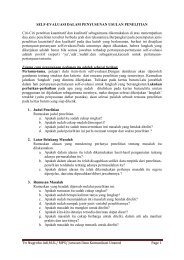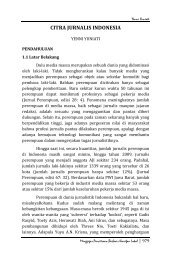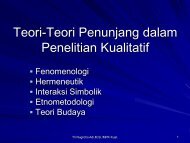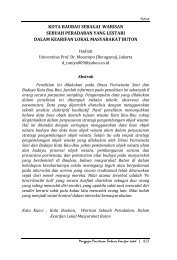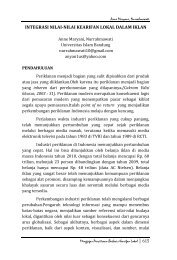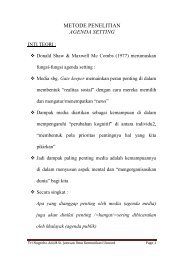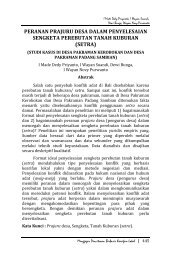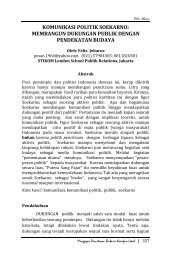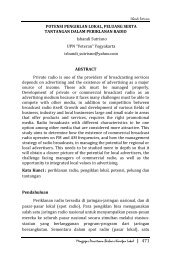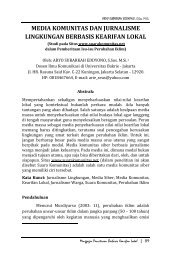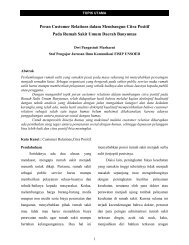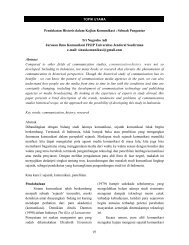New Vocabularies in Film Semiotics
New Vocabularies in Film Semiotics
New Vocabularies in Film Semiotics
Create successful ePaper yourself
Turn your PDF publications into a flip-book with our unique Google optimized e-Paper software.
130 PSYCHOANALYSIS<br />
<strong>in</strong> the simplest terms is that desire will always exist <strong>in</strong> the register of<br />
fantasy, of memory, and of impossibility. The Lacanian subject (of desire)<br />
attempts, throughout its life, to recapture the fantasy of totality, wholeness<br />
and unity that is associated with the primordial experience of the breast.<br />
The orig<strong>in</strong>al object of desire is thus created as fantasy <strong>in</strong> the difference<br />
between the need for food and the demand for love, the difference between<br />
the satisfaction of <strong>in</strong>st<strong>in</strong>ctual need and the elaborated memory of that<br />
satisfaction. It is never, therefore, a relation to a real object <strong>in</strong>dependent of<br />
subject, but a relation to fantasy. And this “fantasmatic” creation is<br />
cont<strong>in</strong>ually repeated throughout the life of the subject as various objects<br />
“stand <strong>in</strong>” for what can never be fully achieved. Thus Lacanians describe<br />
desire as “circulat<strong>in</strong>g endlessly from representation to representation.”<br />
A related concept is that of the DRIVE, or <strong>in</strong>st<strong>in</strong>ctual energy, def<strong>in</strong>ed as<br />
a dynamic process which directs the organism towards an aim. Accord<strong>in</strong>g<br />
to Freud, an <strong>in</strong>st<strong>in</strong>ct has its source <strong>in</strong> a bodily stimulus; its aim is to<br />
elim<strong>in</strong>ate the state of tension deriv<strong>in</strong>g from the source; and it is <strong>in</strong> the<br />
object, or thanks to it, that the <strong>in</strong>st<strong>in</strong>ct may achieve its aim. 3 In “Inst<strong>in</strong>cts<br />
and their Vicissitudes,” Freud po<strong>in</strong>ts out that “an <strong>in</strong>st<strong>in</strong>ct may undergo the<br />
follow<strong>in</strong>g vicissitudes: reversal <strong>in</strong>to its opposite, turn<strong>in</strong>g around upon the<br />
subject, repression, sublimation” (Freud 1963c:91). What is important to<br />
note about Freud’s approach is that it dist<strong>in</strong>guishes the drive from the<br />
biological <strong>in</strong>st<strong>in</strong>ct. The theory of component drives accounts for both the<br />
bisexual disposition of the child and the variability which will determ<strong>in</strong>e,<br />
through an <strong>in</strong>dividual’s life, the k<strong>in</strong>d of representation that will be<br />
associated with the drive.<br />
In the Freudian account, as the child grows, there is a gradual<br />
organization of the libid<strong>in</strong>al drives (which had at first circulated<br />
POLYMORPHOUSLY, unattached to a specific object and not motivated<br />
<strong>in</strong> any s<strong>in</strong>gle direction). This organization, while still centered on the<br />
child’s own body, now channels sexuality toward various objects and aims.<br />
The first phase of sexual life is associated with the drive to <strong>in</strong>corporate<br />
objects (the oral stage); <strong>in</strong> the second, the anus becomes the erotogenic<br />
zone (the anal stage); and <strong>in</strong> the third, the child’s libido is focussed on the<br />
genitals (the phallic stage).<br />
Our discussion of Freud and Lacan is necessarily provisional, simplified<br />
for the sake of explanation. Given this qualification, a loose connection can<br />
be made between Freud’s oral phase and Lacan’s MIRROR PHASE. The<br />
second of the moments of loss which structure the life of the child <strong>in</strong> the<br />
Lacanian formulation <strong>in</strong>volves the first acquisition of “self,” that is, the<br />
way that the subject beg<strong>in</strong>s to establish an identity with<strong>in</strong> a universe of<br />
mean<strong>in</strong>g through a series of imag<strong>in</strong>ary identifications, provoked by an<br />
<strong>in</strong>itial sense of separation, or difference. Lacan considers this development<br />
of the self and the formation of the psyche <strong>in</strong> terms of



